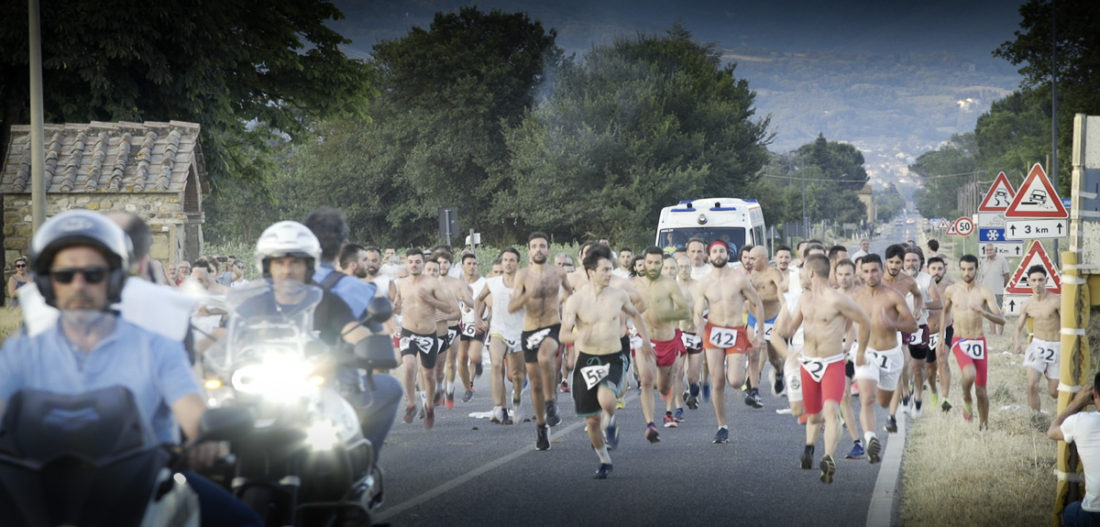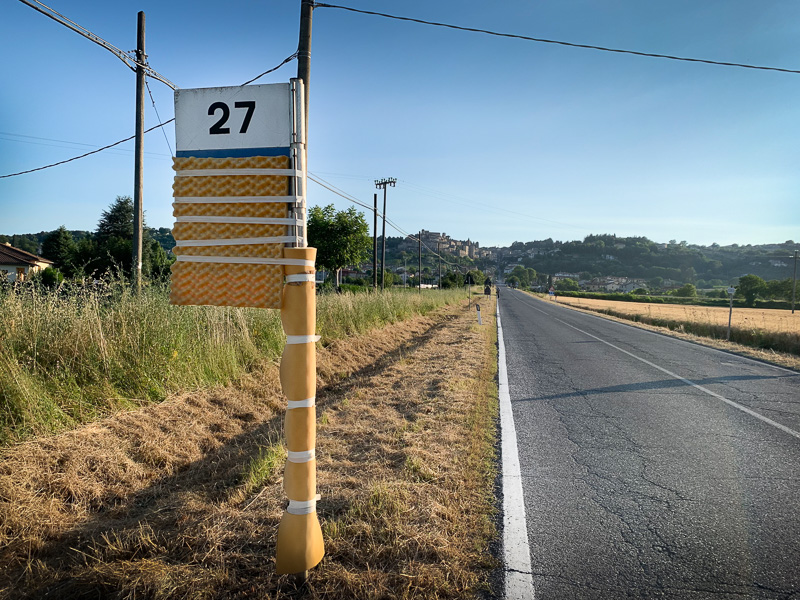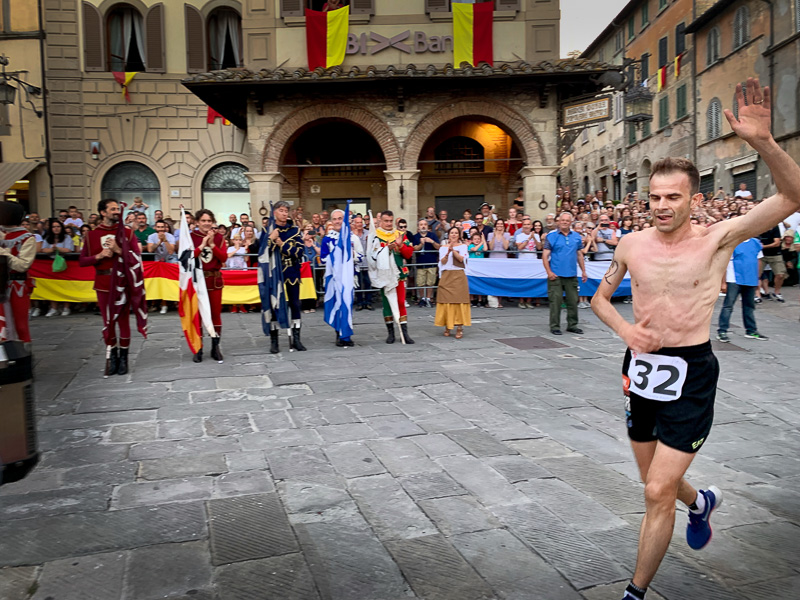
One crazy race
I originally posted this on July 7, 2019. The race did not occur in 2020, of course, because of coronavirus, so I wanted to mark the date. I had no idea how prophetic I was when I wrote below, one year ago, “Next year will be different”. Truer words have never been said…
Every June 29th the village of Anghiari hosts the Palio della Vittoria, or Race of the Victory, to commemorate the Battle of Anghiari. It’s one of the oldest, most famous, and according to the Corriere newspaper, craziest races in Italy. The battle, fought in 1440 between Florence and Milan, is known for three things: Florence’s victory cemented its dominance and set it up to be the powerhouse of the Renaissance, the battle is the subject of Leonardo da Vinci’s lost painting (believed to be his best work), and Machiavelli wrote scathingly about the battle reporting that only one soldier died—and that’s because he fell off his horse. (Local historians deny this. According to them the Tiber valley was basically awash in blood…)
The palio, at first a horse race, was held every year on the anniversary of the battle, starting in 1441. It was was stopped in 1827 because it had become so violent that one of the jockeys was killed. The race was brought back sporadically during the late 1800s through the early 1900s as a foot race and is now an annual event.
The palio is its own sort of battle. Every year teams of runners from towns in Tuscany and Umbria (who had soldiers in the original battle) are invited to participate. The starting line is at the battlefield site in the valley and the race covers 1440 meters, a good part of it straight uphill—on a road with an incline of 18%—to the main piazza. It lasts just over five minutes. The race is famous for lots of bodily contact. Runners wear tear-away jerseys that most shed the moment the starting gun goes off so they are harder to grab. The street signs are padded right before the race.

If this isn’t daunting enough on a hot summer day there’s the added element of strategy, sabotage, and subterfuge. I decided to call one of the runners, Celestino, who happens to be our physical therapist and was born in the farmhouse next to us, and ask him all about it.
Each town has four runners and they work together to “protect” the fastest from being shoved off the course (something you can see happening to the runner circled in the video above). Sometimes towns who know they can’t win will work together with other towns to help them with the understanding that the favor will be returned in a future race. (These alliances are a secret at the time of the race.) This year Anghiari and Venice worked together to help block runners from Pieve Santo Stefano, an even tinier village than Anghiari further up the Tiber river valley. Anghiari has won the race four times, and Pieve Santo Stefano three, so it was important that Pieve not be allowed to win again to tie the record, hence the alliance. One runner was employed as a sprinter who ran all out for 300 meters to get ahead and stop another runner from another town. He then walked the rest of the way uphill.
There were a record number of runners this year, 84 athletes from 22 different towns. Milan was new to participating in the race. Ironically, considering the combatants of the original battle, one of their runners, Salvatore Gambino, a professional long distance runner, won.

Celestino said that the Milanese runner was unhindered since the Milanese team members were unknown. Next year will be different.
The race is followed by a seated, candlelit dinner for 1,000 on the walls of Anghiari. Runners eat for free.






No Comments